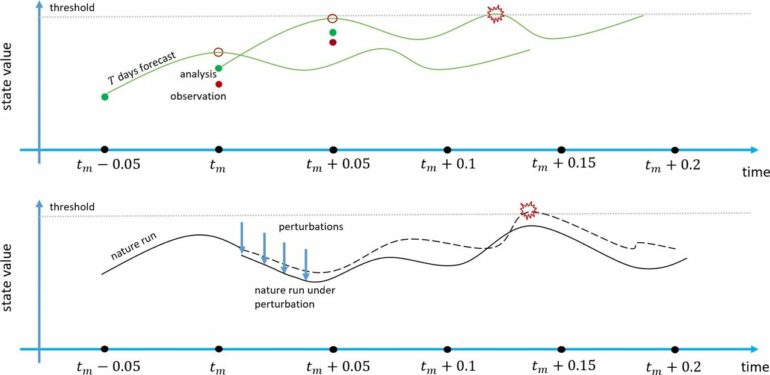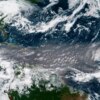RIKEN scientists have demonstrated a way to make small tweaks in weather systems as a means to prevent, or at least reduce, the severity of extreme weather events such as torrential rain. They did this by taking advantage of the chaos that is inherent to such systems. Through this work they hope to develop ways to prevent extreme weather events, which have become more common in recent years.
According to Takemasa Miyoshi, the leader of the research group, “It is generally accepted that we need to learn how to predict severe weather events so that we can prepare for them, but it would also be desirable to be able to mitigate the events themselves. That’s what we are interested in achieving.”
His group took on this challenge as part of the Japanese government’s moonshot-millennia program, and in previously published work, they described the possibility of controlling weather by initiating small changes in it as it forms. At that time, they used the simple Lorenz 63 weather model, which only has a few variables, and showed that it would be possible to induce small perturbations in the system to keep it on one side of a so-called “butterfly pattern.”
Their new study published in Nonlinear Processes in Geophysics goes beyond the simple model. In it, the team adopted the Lorenz 96 model. Essentially, it sets a weather variable for 40 points along a line of latitude around the Earth, and looks at how each of these points changes as it interacts with neighboring points throughout the year. Approximately once or twice a year, the points show large variations, which correspond to extreme weather events. As part of a control simulation experiment, the members of the team were able to eliminate the extreme events by making small tweaks in a 100-year run of the model.
The control simulation experiment essentially took advantage of the chaotic nature of the system; small perturbations—which might for example involve making centimeter/second changes in wind speed to prevent a typhoon with winds that are many times more powerful—done strategically ahead of time could prevent the system from entering an undesired area, meaning that they could stop extreme events from happening.
According to Miyoshi, “Using the chaos inherent in systems such as the weather is attractive. In the past, we generally looked toward geoengineering projects, changing the climate to counteract global warming. However, this entails large costs and associated risks. It is better if we can limit our interventions to the minimum required for small-scale but extreme weather events.
“In the future, we plan to continue our experiments with more realistic weather models. It is important also to note that there are ethical, legal, and social issues that must be thoroughly discussed, such as the risks involved in making the changes compared to the gains that will come from them.”
More information:
Qiwen Sun et al, Control simulation experiments of extreme events with the Lorenz-96 model, Nonlinear Processes in Geophysics (2023). DOI: 10.5194/npg-30-117-2023
Citation:
Harnessing chaos: Simulation experiment demonstrates way to mitigate extreme weather events (2023, June 20)



